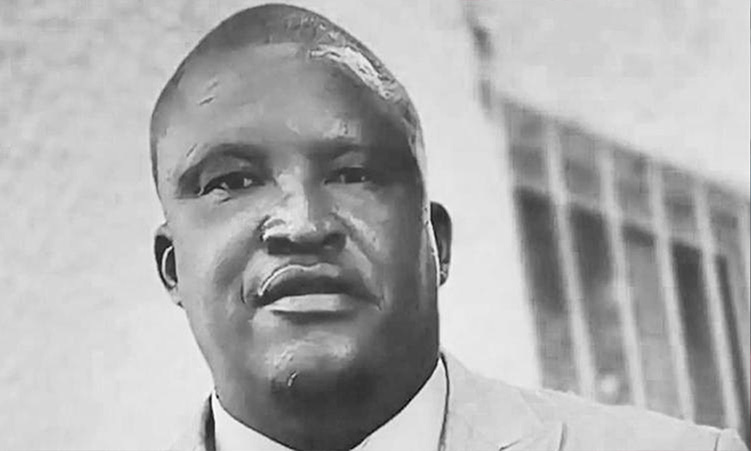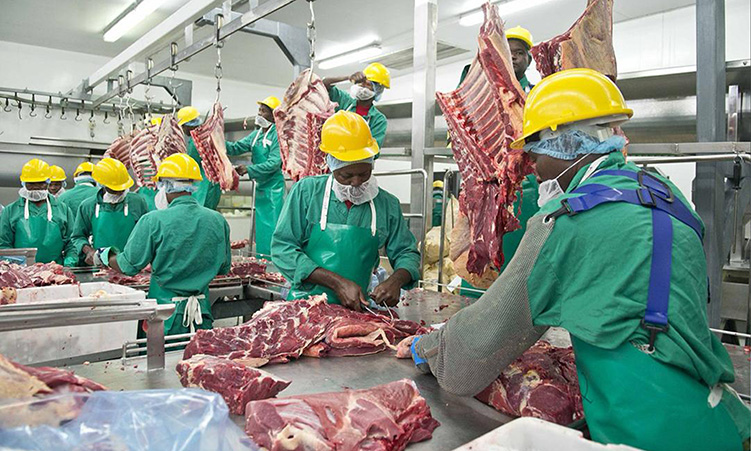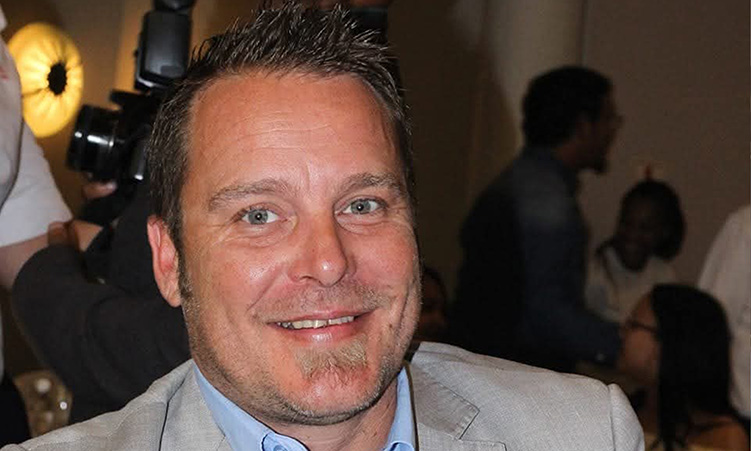A GRAND dream of former President Sam Nujoma to link Katima Mulilo by rail to a fog-covered rocky Cape Fria in the Skeleton Coast Park might evaporate into thin air.
It is not viable, a preliminary environmental assessment says. The assessment says that not only will it fail to benefit rural communities in any way, it will have a negative impact on their lives.Further, it will seriously interfere with the seasonal floods of the Kwando River in the Caprivi and Okavango regions, will have a “devastating effect” on the Kunene Region as a tourist destination, and will doom the future of Namibia’s famous desert elephants and black rhino.NUTS AND BOLTS The envisaged railway would be 1 500 kilometres long, stretching from Katima Mulilo in the Caprivi Region via Okahao, Opuwo and through the riverbed of the Hoarusib River in the Kunene Region past Orupembe to Cape Fria on the Skeleton Coast.A new road would run parallel to the rail line in the western parts known as Kaokoland, the last wilderness in Namibia where the famous desert elephants and black rhino still roam freely.Their future would be doomed, according to the report, as the envisaged rail line would cut across the Sanitatas and Orupembe conservancies, from which the nomadic Ovahimba people derive an income from tourists.The report, which was recently distributed to the public library in Windhoek and regional council offices of the seven regions affected by the proposed rail line, stated that the project is nowhere to be found in strategic planning documents of Government like Vision 2030 and is similarly not included in the National Development Plans.”It is also not covered in the National Transport Development Plan of 2000,” the team of experts state in the study.”There is a need to measure this development against the objectives and priorities set in these documents,” the study notes.WEIGHING BENEFITS “The negative ecological changes in the north-western Kunene Region and socio-economic changes along the entire route will only be worthwhile if they are offset by significant benefits to the country,” the report says.Because the rail link would follow the riverbed of ephemeral rivers like the Hoarusib and the Munutum and near the Khumib, it would lead to the loss of oases along the riverbanks, which are important to people, livestock and wildlife.”This impact is a fatal flaw,” the report states.Scenic landscapes would be “seriously scarred by major earthworks, high bridges, vehicle and rail tracks down to the Skeleton Coast plains and dune fields”.It would have a “devastating effect” on the Kunene Region as a tourist destination, where existing and potential rural conservancy and commercial tourism enterprises could be destroyed.The envisaged railway would also seriously interfere with the seasonal floods of the Kwando River in the Caprivi and Okavango Regions and on the seasonal oshanas in the north-central reasons, the study established.Rural people would not benefit from the new railway, because it would only be used for cargo and not for passenger transport.ALTERNATIVES “Former President Sam Nujoma pushed the proposed rail link as well as a parallel road through the scenic wilderness areas of the Kaokoland in the north-western Kunene Region and his protegé, former Transport Minister Moses Amweelo, eagerly followed to please Nujoma, regardless of the environmental consequences,” an engineer told The Namibian yesterday.”The costs involved for this triple effort – a rail and road link plus a new harbour in a such a remote and difficult terrain – will be enormous,” he added.”It is unnecessary to construct a harbour at Cape Fria, since the port of Walvis Bay is still underutilised and the same goes for the Luederitz harbour,” the expert said.The team of experts recommended that a thorough “strategic-level assessment” be conducted in which all “proposed transport corridors and harbours – including existing ones – are considered in terms of their potential benefits to the country and in meeting the country’s strategic development objectives …some components of the (new) study should be done by an environmental economist,” the preliminary assessment recommends.Alternatives like the “no-project alternative” (not to go ahead) should also be considered.This should be done to weigh the costs and benefits of the present eco-tourism and wilderness emphasis for Kaokoland compared to the port and railroad investment.The new railway would traverse the Bwabwata National Park in Caprivi and the Skeleton Coast Park, “which should be left undisturbed as this is the reason for their existence”, the preliminary environmental assessment notes.”The rail link between Katima Mulilo and Cape Fria will only be sustainable if it fulfils identified transport requirements and honours the principles enshrined in Vision 2030 and the national development plans …and if the full feasibility study of the Cape Fria harbour concludes that it is feasible,” the experts conclude.The preliminary environmental impact assessment was conducted for the Ministry of Works, Transport and Communications by Urban Dynamics, Enviro Dynamics and Windhoek Consulting Engineers.They also looked into a new railway from Rundu to Grootfontein.It would cross 30 commercial farms, but would have minimal environmental impact.Interested individuals and environmental organisations can still submit input and comments about the project until this Friday.Comments must be directed to Enviro Dynamics at fax (061) 24 0309 or e-mail to envirod@africaonline.com.na.The assessment says that not only will it fail to benefit rural communities in any way, it will have a negative impact on their lives.Further, it will seriously interfere with the seasonal floods of the Kwando River in the Caprivi and Okavango regions, will have a “devastating effect” on the Kunene Region as a tourist destination, and will doom the future of Namibia’s famous desert elephants and black rhino.NUTS AND BOLTS The envisaged railway would be 1 500 kilometres long, stretching from Katima Mulilo in the Caprivi Region via Okahao, Opuwo and through the riverbed of the Hoarusib River in the Kunene Region past Orupembe to Cape Fria on the Skeleton Coast.A new road would run parallel to the rail line in the western parts known as Kaokoland, the last wilderness in Namibia where the famous desert elephants and black rhino still roam freely.Their future would be doomed, according to the report, as the envisaged rail line would cut across the Sanitatas and Orupembe conservancies, from which the nomadic Ovahimba people derive an income from tourists. The report, which was recently distributed to the public library in Windhoek and regional council offices of the seven regions affected by the proposed rail line, stated that the project is nowhere to be found in strategic planning documents of Government like Vision 2030 and is similarly not included in the National Development Plans.”It is also not covered in the National Transport Development Plan of 2000,” the team of experts state in the study.”There is a need to measure this development against the objectives and priorities set in these documents,” the study notes. WEIGHING BENEFITS “The negative ecological changes in the north-western Kunene Region and socio-economic changes along the entire route will only be worthwhile if they are offset by significant benefits to the country,” the report says.Because the rail link would follow the riverbed of ephemeral rivers like the Hoarusib and the Munutum and near the Khumib, it would lead to the loss of oases along the riverbanks, which are important to people, livestock and wildlife.”This impact is a fatal flaw,” the report states.Scenic landscapes would be “seriously scarred by major earthworks, high bridges, vehicle and rail tracks down to the Skeleton Coast plains and dune fields”.It would have a “devastating effect” on the Kunene Region as a tourist destination, where existing and potential rural conservancy and commercial tourism enterprises could be destroyed.The envisaged railway would also seriously interfere with the seasonal floods of the Kwando River in the Caprivi and Okavango Regions and on the seasonal oshanas in the north-central reasons, the study established.Rural people would not benefit from the new railway, because it would only be used for cargo and not for passenger transport.ALTERNATIVES “Former President Sam Nujoma pushed the proposed rail link as well as a parallel road through the scenic wilderness areas of the Kaokoland in the north-western Kunene Region and his protegé, former Transport Minister Moses Amweelo, eagerly followed to please Nujoma, regardless of the environmental consequences,” an engineer told The Namibian yesterday.”The costs involved for this triple effort – a rail and road link plus a new harbour in a such a remote and difficult terrain – will be enormous,” he added.”It is unnecessary to construct a harbour at Cape Fria, since the port of Walvis Bay is still underutilised and the same goes for the Luederitz harbour,” the expert said.The team of experts recommended that a thorough “strategic-level assessment” be conducted in which all “proposed transport corridors and harbours – including existing ones – are considered in terms of their potential benefits to the country and in meeting the country’s strategic development objectives …some components of the (new) study should be done by an environmental economist,” the preliminary assessment recommends.Alternatives like the “no-project alternative” (not to go ahead) should also be considered.This should be done to weigh the costs and benefits of the present eco-tourism and wilderness emphasis for Kaokoland compared to the port and railroad investment.The new railway would traverse the Bwabwata National Park in Caprivi and the Skeleton Coast Park, “which should be left undisturbed as this is the reason for their existence”, the preliminary environmental assessment notes.”The rail link between Katima Mulilo and Cape Fria will only be sustainable if it fulfils identified transport requirements and honours the principles enshrined in Vision 2030 and the national development plans …and if the full feasibility study of the Cape Fria harbour concludes that it is feasible,” the experts conclude.The preliminary environmental impact assessment was conducted for the Ministry of Works, Transport and Communications by Urban Dynamics, Enviro Dynamics and Windhoek Consulting Engineers.They also looked into a new railway from Rundu to Grootfontein.It would cross 30 commercial farms, but would have minimal environmental impact.Interested individuals and environmental organisations can still submit input and comments about the project until this Friday.Comments must be directed to Enviro Dynamics at fax (061) 24 0309 or e-mail to envirod@africaonline.com.na.
Stay informed with The Namibian – your source for credible journalism. Get in-depth reporting and opinions for
only N$85 a month. Invest in journalism, invest in democracy –
Subscribe Now!










